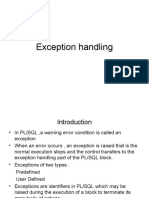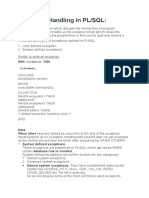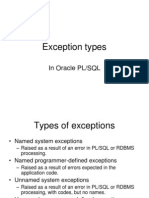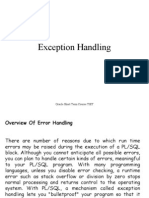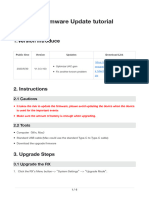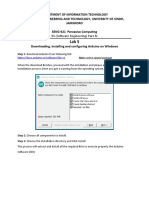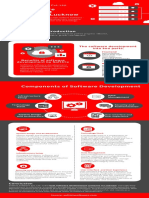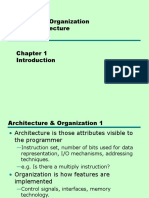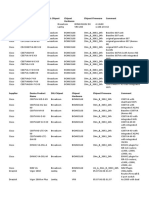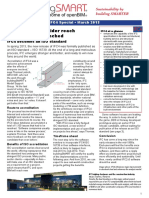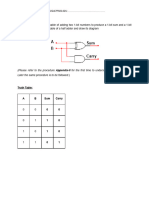0% found this document useful (0 votes)
325 views3 pagesPL/SQL Exception Handling Guide
In PL/SQL, exceptions are errors or warnings that occur during program execution. There are two types of exceptions: predefined exceptions, which are raised implicitly for Oracle errors, and user-defined exceptions, which are declared and raised explicitly by the programmer. When an exception is raised, normal execution stops and control transfers to the exception handling part of the PL/SQL block, allowing the programmer to specify statements to execute in response to the exception.
Uploaded by
Nikita KharadeCopyright
© © All Rights Reserved
We take content rights seriously. If you suspect this is your content, claim it here.
0% found this document useful (0 votes)
325 views3 pagesPL/SQL Exception Handling Guide
In PL/SQL, exceptions are errors or warnings that occur during program execution. There are two types of exceptions: predefined exceptions, which are raised implicitly for Oracle errors, and user-defined exceptions, which are declared and raised explicitly by the programmer. When an exception is raised, normal execution stops and control transfers to the exception handling part of the PL/SQL block, allowing the programmer to specify statements to execute in response to the exception.
Uploaded by
Nikita KharadeCopyright
© © All Rights Reserved
We take content rights seriously. If you suspect this is your content, claim it here.
/ 3





































